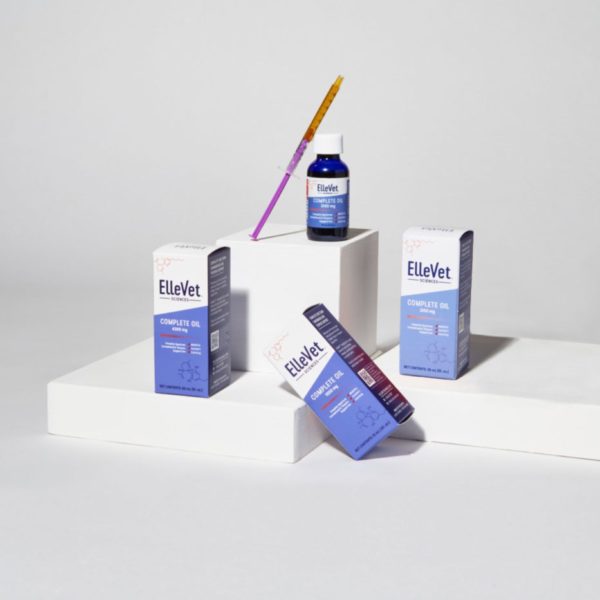Can a little treat from the table or trip to the pantry really hurt your pup? Many human foods will not hurt our dogs, but there are a few which may be delicious to us humans, but toxic to them. Here, I have described four foods that are toxic to dogs, as well as why they are toxic, the dose which is potentially harmful, symptoms of poisoning, and treatment.
1. Chocolate
Why is It Toxic? – Chocolate has the compounds theobromine and caffeine, among other things. While rarely fatal, the chemical theobromine, as well as caffeine can produce significant illness upon ingestion in dogs. Dogs do not metabolize these compounds effectively, as theobromine and caffeine speed up their heart and stimulate the nervous system.
What Is A Risky Dose? – The risk of toxicity is dependent on the concentration of theobromine in the chocolate. Chocolates with the most theobromine content include:
- Cacao Powder
- Unsweetened Baker’s Chocolate
- Semi-Sweet Chocolate
- Dark Chocolate
- Milk Chocolate
A very concerning dose is approximately one ounce of milk chocolate per pound of body weight. So, eating a larger dog eating a crumb, would be okay, although chocolate should never be fed as a treat. A smaller dog, eating a 1.55 ounce Hershey’s chocolate bar, however, may have health consequences.
What Are The Signs/Symptoms of Poisoning? – The signs of chocolate poisoning appear within 6 to 12 hours after ingestion and can last up to 72 hours. The signs include vomiting, diarrhea, restlessness, increased urination, tremors, elevated or abnormal heart rate, and seizures.
Treatment – If your dog ate chocolate, call your veterinarian, where they can monitor symptoms and determine if any supplemental treatment such as an IV is necessary.
2. Grapes and Raisins
Why Is It Toxic? – Canine parents are commonly advised to keep their dogs away from grapes, and their dried form: raisins. This is good advice, as grape toxicity in dogs can cause serious kidney damage and lead to acute kidney failure, which can be fatal. Currently, the specific toxic agent has not been clearly identified, although there is speculation about potential compounds which could be responsible for canine intolerance.
What Is A Risky Dose? – A dangerous dose is just 6 grapes in a 45-lb dog, and all kinds of grapes/raisins are potentially dangerous.
What Are The Signs/Symptoms of Poisoning? – The most common early symptom is vomiting, which generally is present within 24 hours of ingestion. Lack of appetite, lethargy, and possibly diarrhea can be also seen within the next 12-24 hours. More severe signs are unfortunately unseen until acute kidney damage has already begun.
Treatment – Take your dog to the vet if you suspect they have ingested grapes or raisins. The veterinarian will try to block absorption of the toxins and prevent or minimize damage to the kidneys.
3. Onions, Garlic and Chives, and Leeks
Why Is It Toxic? – While these traditional kitchen herbs may be the basis of human culinary masterpieces, they are not so delightful for our pup. These four herb species are members of the Allium family, which can be damaging to a dog’s red blood cell membranes.
What Is A Risky Dose? – It takes 100 grams of onion per 20 kilograms of a dog’s weight to cause toxic effects, which means a 45-pound dog would have to eat one onion to experience toxicity levels.
What Are Some Signs/Symptoms of Poisoning? – Signs of poisoning vary depending upon the amount eaten. Gastrointestinal upset commonly occurs, along with decreased appetite, vomiting, diarrhea, depression, and abdominal pain.
Treatment – If ingestion was recent, a veterinarian may induce vomiting. Your veterinarian may offer supportive care until your dog’s body produces enough healthy red blood cells, only in the most severe cases does your dog require a blood transfusion.
4. Macadamia Nuts
Why Is It Toxic? – While they may be a great addition to our baked goods, macadamia nuts are toxic to dogs. Like grapes and raisins, we do not know the specific toxic agent or mechanism of biological action that causes the poisoning.
What Is A Risky Dose? – Dogs have shown signs after ingesting 1.08 g of nuts/lb, which is about 17 nuts in a 45-lb dog.
What Are Some Signs/Symptoms of Poisoning? – The most common sign of ingestion is weakness in the hind legs, and other symptoms include lethargy, diarrhea, vomiting, tremors, and fever. Symptoms should resolve within 12 to 48 hours.
Treatment – If you suspect your pup ingested macadamia nuts, call your vet. Treatment may include gastric decontamination or anti-nausea medication.
What Other Foods Should My Dog Avoid?
- Corn on the Cob – Corn is digested by dogs, but the cob can cause a blockage in your dog’s intestine
- Avocado – Avocados contain the compound Persin, which in large amounts, can cause vomiting, diarrhea, and myocardial damage
- Xylitol – This artificial sweetener is common in low-fat, diet, and sugar-free products, including some peanut butters. If your dog ingests Xylitol they can go into hypoglycemia which is linked to liver failure and blood clotting disorders.
- Alcohol – Alcohol has an impact on dogs even in small doses.
Hopefully, this is a helpful tool to keep your dog safe and understand which human foods we should avoid feeding our pups!!
The ElleVet Team
844-673-7287
[email protected]
-
 ElleVet Hemp CBD + CBDA Oil For Dogs$70.00 – $229.95
ElleVet Hemp CBD + CBDA Oil For Dogs$70.00 – $229.95 -
 ElleVet Hemp CBD + CBDA Chews$79.95 – $89.95
ElleVet Hemp CBD + CBDA Chews$79.95 – $89.95 -
 ElleVet Hemp CBD + CBDA Soft Gels$39.95 – $139.95
ElleVet Hemp CBD + CBDA Soft Gels$39.95 – $139.95 -
 ElleVet Calm and Comfort Chews$14.95
ElleVet Calm and Comfort Chews$14.95

